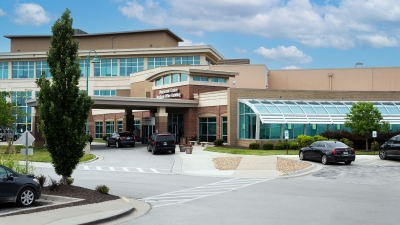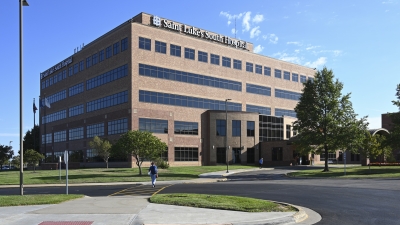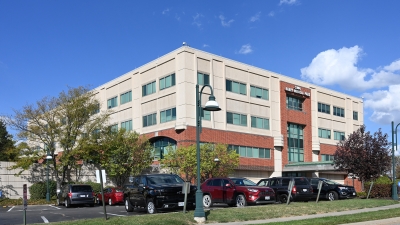Dementia with Lewy Bodies (DLB)
Dementia with Lewy bodies (DLB) is a form of progressive dementia caused by degeneration of the tissues in the brain.
What is dementia with Lewy bodies?
Dementia with Lewy bodies (DLB) is a form of progressive dementia. It's caused by the decay of the tissues in the brain.
People with DLB have a buildup of abnormal protein particles in their brain tissue, called Lewy bodies. Lewy bodies are also found in the brain tissue of people with Parkinson disease (PD) and Alzheimer disease (AD). But in these conditions, the Lewy bodies are generally found in different parts of the brain.
The presence of Lewy bodies in DLB, PD, and AD suggests a link among these conditions. But scientists haven’t yet figured out what the link is.
DLB affects a person’s ability to think, reason, and process information. It can also affect movement, personality, mood, and memory. DLB becomes more common with age. It often starts when a person is in their 60s and 70s. DLB is progressive, which means it continues to get worse over time. There are several types of dementia with different causes.
What causes dementia with Lewy bodies?
The decay or deterioration of brain tissue causes dementia with Lewy bodies. DLB may be genetic. But it's not always clear why someone develops DLB. Lewy bodies in the brain affect substances called neurotransmitters. A neurotransmitter is a chemical that helps send signals from one nerve cell to another.
One type of neurotransmitter is dopamine. It helps send signals that cause muscle movement. Lewy bodies interfere with the making of dopamine. A lack of dopamine causes movement problems, such as those seen in PD.
Acetylcholine is another type of neurotransmitter. It's found in the parts of the brain responsible for memory, thinking, and processing information. When Lewy bodies build up in these areas, they use up the acetylcholine, causing symptoms of dementia.
What are the symptoms of dementia with Lewy bodies?
The main sign of DLB is a decline that gets worse in things like memory, thinking, and problem solving. This decline is enough to affect the ability to work and do normal daily activities. Memory may be affected. But it isn’t usually as impaired as in someone with AD.
DLB is generally diagnosed when at least two of the following features also occur with dementia:
Changes in attention and alertness. These changes may last for hours or days. Signs of these changes include staring into space, being lethargic or drowsy, and having speech problems.
Visual hallucinations. These hallucinations recur and are very detailed. They generally don’t bother the person having them.
Movement symptoms consistent with PD. These include slow movement, shuffling gait, rigidity, and falls. The person may also have tremors. But they are not as pronounced as in a person with PD with dementia.
Other signs and symptoms seen in DLB include:
Depression
Sleep disorder that affects REM sleep, causing vivid dreams with body movement
Dizziness, feeling lightheaded, fainting, or falling
Urinary incontinence
People with DLB may have problems with their autonomic nervous system. This is the part of the nervous system that controls your bodily functions, such as blood pressure and heart rate. You may have a condition called orthostatic hypotension. This causes low blood pressure. You may pass out or feel dizzy. You may also have trouble digesting foods, have excessive sweating, or have problems with bladder and bowel control.
In DLB, memory problems often occur later in the disease.
DLB can be confused with other forms of dementia. But it also has unique features, such as hallucinations and delirium.
The symptoms of DLB may look like other conditions. Always see a healthcare provider for a diagnosis.
How is dementia with Lewy bodies diagnosed?
Your healthcare provider will ask about your medical history and symptoms. They will do a physical exam. You may also need these tests:
Blood tests. These are to rule out conditions, such as vitamin B-12 deficiency and low levels of thyroid hormone (hypothyroidism).
CT scan. This imaging test uses X-rays and a computer to create detailed pictures of the brain.
Electroencephalogram (EEG). An EEG measures the electrical activity of the brain.
MRI. This imaging test uses a large magnet and radio waves to look at organs and structures inside your body without using X-rays. MRIs are very useful for examining the brain.
Positron emission tomography (PET). PET may find chemical changes in an organ or tissue. These changes can show the start of a disease before physical changes can be seen with other imaging tests.
Neuropsychological assessments. These tests assess things such as attention span, memory, language and math skills, and problem-solving skills.
Psychiatric evaluation. This may be done to rule out a psychiatric condition that may look like dementia.
How is dementia with Lewy bodies treated?
DLB has no cure. Treatment involves managing symptoms. It may include:
Supportive care
Physical therapy
Psychotherapy
Behavioral interventions or strategies to manage the disease
Medicines used to treat AD and PD may also be used to treat DLB. Some people with DLB may not be able take these medicines. Talk with your healthcare provider if you have problems taking any medicines.
Medicines can help with some of the symptoms of DLB, such as slow movements, low blood pressure, and digestion problems.
Living with dementia with Lewy bodies
Interventions used in other forms of dementia may also help people living with DLB. These include:
Using glasses or hearing aids as needed
Having a structured environment
Learning behavioral strategies to manage the disease. These will change over time as the disease gets worse.
Improving lighting and staying around other people to help with hallucinations
Using assistive devices or physical therapy to help prevent falls
It’s important to work with a healthcare provider familiar with DLB and the many aspects of the disease. Other specialists are often involved, too.
When should I call my healthcare provider?
Talk with your healthcare providers about when it's important to call them. Your healthcare providers will likely advise calling if your symptoms become worse, or if you have obvious or sudden changes in behavior, personality, or speech. This includes mood changes, such as increasing depression or feeling suicidal.
Key points about dementia with Lewy bodies
DLB is a form of progressive dementia. It affects a person’s ability to think, reason, and process information.
DLB is caused by the decay or deterioration of brain tissue.
DLB has some features that distinguish it from other forms of dementia.
There is no cure for DLB. Treatment involves managing symptoms.
Next steps
Tips to help you get the most from a visit to your healthcare provider:
Know the reason for your visit and what you want to happen.
Before your visit, write down questions you want answered.
Bring someone with you to help you ask questions and remember what your provider tells you.
At the visit, write down the name of a new diagnosis, and any new medicines, treatments, or tests. Also write down any new instructions your provider gives you.
Know why a new medicine or treatment is prescribed, and how it will help you. Also know what the side effects are.
Ask if your condition can be treated in other ways.
Know why a test or procedure is recommended and what the results could mean.
Know what to expect if you do not take the medicine or have the test or procedure.
If you have a follow-up appointment, write down the date, time, and purpose for that visit.
Know how you can contact your healthcare provider if you have questions, especially after office hours or on weekends and holidays.




